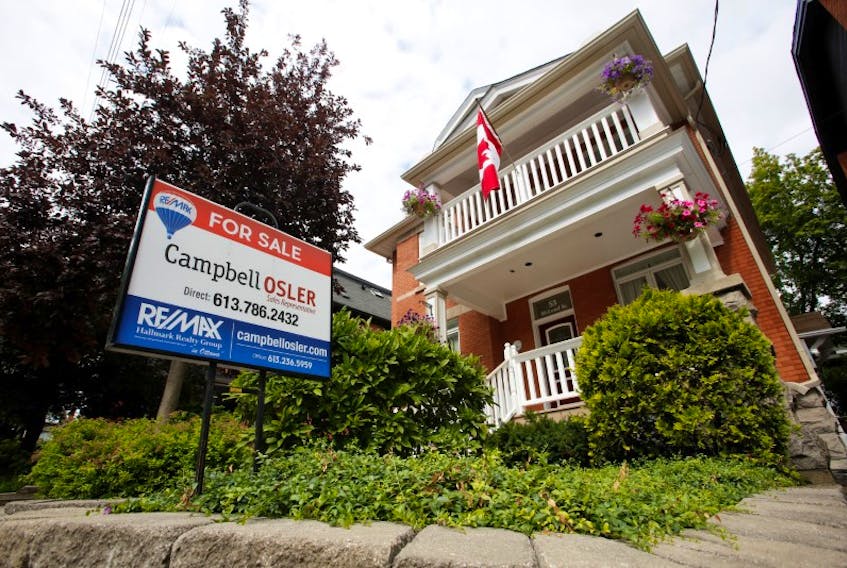It probably wouldn’t qualify as a controversy, but it might be as close as the world of Canadian macroprudential policy will ever come to one. In a May 23 letter to the House of Commons standing committee on finance, Evan Siddall, president and CEO of the Canada Mortgage and Housing Corp., had some pointed words for those who would seek to weaken federal mortgage interest stress tests, which the Liberal government and the Office of the Superintendent of Financial Institutions (OSFI) have made more stringent in two separate actions.
Home sales and prices in some major markets (such as Vancouver) have plummeted since then, and the quantum of insured mortgages has shrunk. That’s spurred some voices among Canadian real estate industry groups and banks to call for, among other things, restoration of the 30-year mortgage and relaxation of the stress tests, which they see as having gone too far in impeding sales, lowering prices and just generally sucking the wind out of the economy.
In response, Siddall, whose federally backed corporation insures many thousands of mortgages in this country, warned that industry groups militating for laxer rules were engaging in “reckless myopia,” adding that the “potential consequences of Canada’s debt-fuelled real estate boom are serious.” For good measure, he threw in mention of the Dutch Tulip Crisis, the South Sea Bubble, the Roaring ’20s and, of course, the U.S. real estate boom of the 2000s. And to any bank economists pushing for weaker stress tests, he had this to say: “Since a federal government guarantee stands behind lenders’ insured mortgages, these appear to be cases of evident moral hazard. I doubt they’d be as cavalier if it were their risk.”
Those are pretty tough words, coming from the head of an organization deeply involved with both the housing industry and lenders. Yet perhaps the most interesting thing about the letter is that it’s a small salvo in a bigger battle of words — and viewpoints — between policymakers and market participants (including investors). The core issue is this: How best to respond to the challenges of a decade-long rally in asset prices that looks like it’s getting long in the tooth?
This is no doubt a gross oversimplification, but the broad strokes are relevant. On the one side, you have market participants who believe the good times really can just keep on rolling if policymakers would just get out of the way, or who at least want to extend the good times as long as possible before the (maybe inevitable) downturn hits. The trouble is that the policies that will let the good times roll — accommodative interest rates, lax lending rules, deregulation and so on — build up systemic risks, inflate asset prices and fuel inequities in the economy, such as wealth inequality and, especially here in Canada, the inability of younger people to own their own home while older homeowners amass substantial net worth.
On the other side, you have policymakers who recognize the dangers of asset bubbles and seek to avoid a downturn or mitigate its severity. But they are walking a fine line. One surefire way to deflate asset prices is to raise interest rates, but policymakers’ experiment with that has ended rather abruptly — their tightening maybe worked too well, as last year’s equity meltdown would suggest. That gets to the nub of the policymakers’ challenge: How can they take risk out of the system without sparking the very downturn they are hoping to avoid?
Obviously, the more careful policymakers are, the less impact their policies will have. By the CMHC’s estimate, the mortgage stress tests have served to reduce Canadian housing prices by 3.4 per cent since 2010 from what they would have been otherwise. That’s something, I guess, but it’s hardly enough to deflate the bubble, or to make a home much more affordable for the average 25- to 34-year-old earning $44,000 a year. Nor is it likely to send the Canadian economy into a death spiral, it’s worth pointing out.
Arguably, the stakes are higher than ever before, because of the defining aspect of developed-country economies: low growth. That has persisted since before the Great Recession, by the way, and it has a lot do with aging workforces, which is something monetary and regulatory policymakers really can’t do much about. With growth around two per cent (lower in Europe and Japan), it wouldn’t take much of a policy error to slip economies into recession.
So we are stuck in a low-yield world, where asset prices are inflated and income is capped. You can’t really blame investors who clamour for low rates or homebuyers who want easier lending rules: with dividend and wage growth low in a low-yield environment, asset inflation is the only game in town if you want to do better every year.
The conundrum is growth. Donald Trump — who is probably the loudest voice calling for policymakers to get out of the way, given his criticism of the Federal Reserve and chair Jerome Powell — is at least trying to do something about it. His administration’s tax reform included a sharp increase in capital depreciation write-offs, which might have had something to do with the surprise first-quarter growth in labour productivity of 3.6 per cent — the highest mark since 2010. But will it last? After all, from 2000 on, a big factor in lower economic growth has been lower labour productivity — even as the mass deployment of computers and the evolution of the Internet were supposed to make everybody work better. Higher productivity and stronger growth in the U.S. might be a flash in the pan. And there’s a price for it, in the form of lower tax revenues and soaring government debt — another bubble in the making.
In short, the conflicts between sober policymakers and the forces of cavalierism aren’t going away anytime soon. Unless a policymaker comes along who’s willing to let gas out of the system no matter the consequences, this economic debate could go on for decades.
Copyright Postmedia Network Inc., 2019









